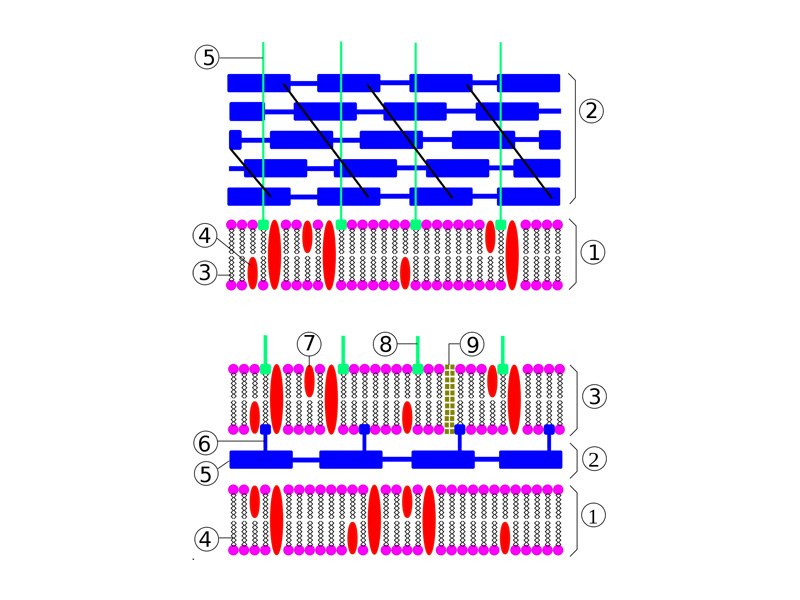
Bacterial cell wall. Top: Gram-positive cell wall. 1-cytoplasmic membrane, 2-peptidoglycan, 3-phospholipid, 4-protein, 5-lipoteichoic acid. Botton: Gram-negative cell wall. 1-inner membrane, 2-periplasmic space, 3-outer membrane, 4-phospolipid, 5-peptidoglycan, 6-lipoprotein, 7-protein, 8-LPS, 9-porins.
It is important for the MCAT to know that differences in the peptidoglycan cell wall are the basis for the differences in bacteria observed in Gram staining. Gram-positive bacteria have a thick mesh-like cell wall made of peptidoglycan while Gram-negative bacteria have a thinner cell wall as well as a lipopolysaccharide outer membrane. A bacterium might additionally possess a thick outer capsule or have pili present.
The bacterial cell wall is present in nearly every species. The bacterial cell wall is formed of peptidoglycan which consists of linear polysaccharide chains cross-linked by short peptides. The cell wall confers mechanical support and prevents bacteria from bursting from high internal osmotic pressure.
There are a few important aspects of the bacterial cell wall to make sure to have down before the MCAT. An easy test of knowledge level that translates well for MCAT writers into questions is the fact that the bacterial cell wall is extremely porous. This means that it is NOT a permeability barrier for anything smaller than a protein.
Another aspect of the discussion of the bacterial cell wall is how the structure of the cell wall relates to the distinction between Gram positive and Gram negative bacteria, which represents a major traditional classification scheme for bacteria in the lab. The distinction basically rests on the vividness of crystal violet staining in the Gram staining procedure. A Gram positive cell contains a thick cell wall that is almost completely composed of peptidoglycan (alternating sequence of N-acetylglucosamine and N-acetyl-muraminic acid) cross-linked by amino acids. A Gram negative cell contains a much thinner cell wall containing a much lower percentage of peptidoglycan. Gram-negative bacteria also have an outer phospholipid membrane in addition to the cell wall and the inner cytoplasmic membrane.
